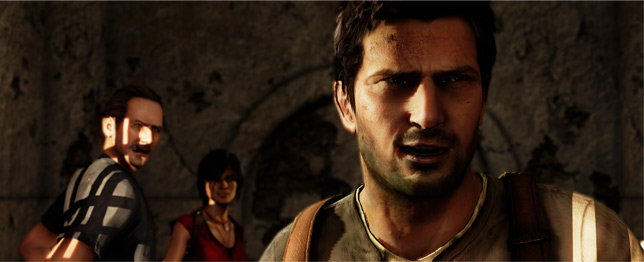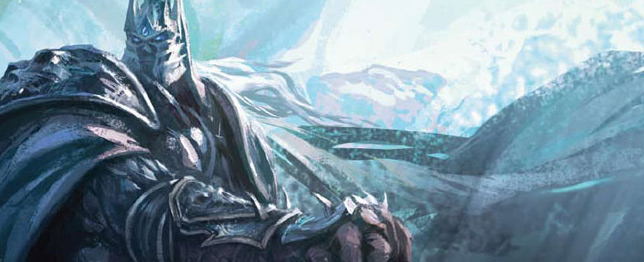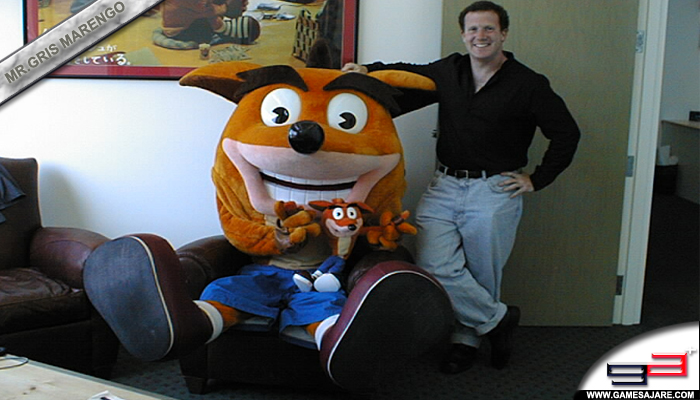FIRMAS INVITADAS – ANDY GAVIN
Pues aquí estamos, señoras y señores (me da a mi que sobretodo señores), resucitando una amada sección añeja cuyo calor aún latía en los corazones de la familia Ajare (con A mayúscula). Lo hacemos con Andy Gavin, fundador de Naughty Dog junto a Jason Rubin y creador de (agárrense los machos y léanlo muy rápido): Math Jam (1985), Ski Crazed (1986), Dream Zone (1987), Keef the Thief (1989), Rings of Power (1991), Way of the Warrior (1994), Crash Bandicoot (1996), Crash Bandicoot 2: Cortex Strikes Back (1997), Crash Bandicoot 3: Warped (1998), Crash Team Racing (1999), Jak and Daxter: The Precursor Legacy (2001), Jak II (2003), Jak 3 (2004) y Jak X: Combat Racing (2006).
Lo hacemos con nada más y nada menos que el padre de Jak & Daxter y Crash Bandicoot, un señor con un experiencia en la industria de los videojuegos más dilatada que… se van haciendo a la idea, un señor brillante educado en el laboratorio de inteligencia artificial del MIT de la siempre querida en estos lares Massachusetts, y a cuya excelsa formación y talento debemos en gran medida la grandeza de los juegos de Naughty Dog. Tras dejar en buenas manos al perro se dedicó a culminar un nuevo reto personal: la escritura de su primer libro de fantasía, «The Darkening Dream», que ya está a la venta (a un precio de risa, pero de momento solo en inglés) y ha recibido muy buenas críticas. Os recomiendo encarecidamente que visitéis su página web, tanto si os gustan los videojuegos como el noble vicio del atiborre. Un testimonio privilegiado de un ser humano excepcional.
Disfruten de la lectura sobre la narrativa en los videojuegos y piensen que les gustaría preguntar a Andy, porque dentro de poco las puertas de la casa Ajare se vuelven a abrir para hacerle una entrevista. Dejen sus preguntas en los comentarios, seleccionaremos un par.
We have a wide variety of “pure” storytelling mediums, like film, long form television, and novels. While these have somevery significant differences they all share the same basic focus on plot and character. Typically at least, good stories introduce a character with problems, get you to like them, then chronicle the struggle as they are compelled to change and adapt to overcome their problems. In the end, they either do so, or are defeated to teach us a lesson (a variant we call tragedy).
These elements: character, plot, and transformational arc, are completely central to the normal story (I deliberately ignore weird experimental storytelling). Really, they are the core of what makes a good film or novel.
But with a game, this whole business is secondary. The primary focus of a game is fun. And fun through gameplay. Does Tetris have any character or plot? Did even Doom? No. But they were fun games. Really fun.
Games such as Naughty Dog’s Jak & Daxter or Uncharted strive to bridge these gaps by offering both. This is very difficult because they don’t really serve each other.

The gameplay in Uncharted 2, for example, has three primary modes: survival gunplay, platforming, and puzzle solving. The player must assess the layout of the level, learn it, and navigate it without getting killed. This involves anticipating the enemies and taking them out first. You use the weapons at your disposal, the mechanics, and the terrain provided to do so. With platforming you need to come to understand what the character can do physical, find your way, and successfully traverse the route.
When these are done well, when the design is varied, the levels pretty, the enemies cool, and the challenges measured, challenging and above all, doable – it’s fun. Uncharted 2 is such a game.
It also has a pretty darn good story which is woven in with the design of the levels and the challenges. This adds to the whole thing. Watching the next segment of story becomes part of your reward for finishing a segment. There is a tremendous level of art that goes into getting both of these to work at the same time, but certainly each is constrained at times by the needs of the other.
Content in games is expensive and difficult to make. Therefore it needs to repeat. You really do need to shoot the same enemy hundreds of times. Otherwise the enemy isn’t providing enough mileage to justify the labor involved to create him. The player is also in control and therefore the consequences of his play affect success or failure.
But in storytelling, success and failure are the carefully monitored heartbeat of any good story. You bring the protagonist up, dash him down, grind him into the ground, lift him up, slam him sideways. I knew this intuitively when writing my first novel, The Darkening Dream. I’ve read so many books and watched so many films and shows that it seemed “obvious.” But at the same time, it turned out to be far from easy. Writing a good story has less constraints than making a good game, but it’s still extremely difficult. You need to be constantly balancing the issues of character, motivation, the logic of the plot, and the need to seesaw the dramatic tension. In the end stylistic concerns sometimes overwhelm dramatic ones (to the reader’s detriment).
In a game, it’s even more complicated, and there is barely a chance of hitting all the right dramatic notes. The player has a lot to say about this natural up and down pacing, so the story-based game tries to separate how well you are really doing from the actual plot. Usually death or failure in the game causes the player to merely repeat some segment of the game (and hence the story), when they finish the level and get the next segment of storytelling, they’ll get it regardless of whether they died once or 100 times. The better player merely proceeds faster.
This is different, but even more problematic in a less linear game such as World of Warcraft. There, the mechanics of the game heavily distort the conceits of storytelling. The story is even broadly linked to the chronological evolution of the game in real time. For example, in December of 2009 Blizzard released the Icecrown Citadel patch of Wrath of the Lich King, making it possible for players to finally reach and confront the ultimate boss of the expansion (the titular Lich King). But the fact is, in order to properly maintain the reward mechanics of end game raiding, each character was and often did, progress through this segment of the story once, or even twice a week.

Now, two years later, the Lich King has been defeated, the world of Azeroth has been broken, yet it’s still possible to go back to Icecrown and take on Arthas again. And again. Ditto for any of the several hundred even older bosses. Players accept that they have random access to a long and convoluted story. In fact, the need to generate so much gameplay in WOW has created a body of lore that gives the Silmarillion a run for its money. But the way in which it’s experienced mutes the emotional intensity.
What really provides the excitement in WOW (and many other games), isn’t the question of whether the dragon queen Onyxia lives or dies, but the – shall we dare say – drama of whether she does tonight, for us, the group fighting her. And more importantly, will she drop the Nemesisskullcap (arbitrary cool piece of loot) one has been trying to get for six months.
Hay una gran variedad de medios “puros” para contar historias, como las películas, las series de televisión y las novelas. Aun con sus diferencias intrínsecas, todos se centran básicamente en trama y personajes. Típicamente, las buenas historias introducen un personaje con problemas para que le queramos, le hacen pasar por su particular calvario en el que se ve obligado a cambiar y adaptarse a dichos problemas, y finalmente los supera o se ve superado por ellos, con lo que se extrae una lección (lo que llamaríamos tragedia).
Estos elementos, personajes, trama y arco transformacional son completamente indispensables en una historia normal (ignoremos deliberadamente los “experimentos”). En realidad, son el núcleo de lo que hace buenas a una película o novela.
Pero en un juego, todo ello es secundario. El objetivo principal de un juego es la diversión. Y la diversión a través del juego. ¿Necesita Tetris personajes o argumento? ¿Siquiera Doom? No. Pero son juegos divertidos, muy divertidos.
Juegos como los Jak & Daxter o Uncharted de Naughty Dog tratan de salvar el abismo entre ambas propuestas ofreciendo ambas. Pero es muy difícil lograr que funcione porque en realidad ninguna está al servicio de la otra.

La jugabilidad de Uncharted 2, por ejemplo, tiene tres modos primarios: tiroteos, plataformeo y resolución de puzles. El jugador debe evaluar el diseño del nivel, comprenderlo y navegar por él sin que le maten. Esto implica anticiparse a los enemigos y acabar con ellos primero. Para ello, usa las armas a su disposición, las mecánicas y el terreno que le proporcionan. Con el plataformeo la necesidad del jugador radica en entender que puede hacer el personaje físicamente, encontrar el camino y recorrerlo existosamente.
Cuando esas partes están bien hechas, cuando el diseño es variado, los niveles bonitos, los enemigos atractivos y los desafíos son acompasados, desafiantes y, sobre todo, posibles de superar… es divertido. Uncharted 2 triunfa en cada una de esas partes.
También tiene una historia muy buena que están imbricada en el diseño de los niveles y el aporte de desafíos, lo que supone la guinda al pastel. Ver el siguiente segmento de historia se convierte en parte de la recompensa por finalizar un segmento. Lograr que jugabilidad e historia funcionen al mismo tiempo, cuando a veces las necesidades de una se ven constreñidas por las de la otra, es todo un arte.
La creación de contenido en los videojuegos es cara y dificultosa… y es necesario que se repita; es imprescindible que haya que disparar a cierto enemigo cientos de veces a lo largo del juego para justificar el trabajo dedicado a su creación. Además, el jugador tiene el control y el cómo juega afecta al éxito o fracaso.
Pero en la narrativa, el éxito o el fracaso el “ritmo cardíaco” de cualquier buena historia está cuidadosamente controlado. Levantas al protagonista, lo haces caer, lo arrastras por el fango, lo vuelves a levantar, lo bamboleas… Sabía qué debía hacer intuitivamente cuando escribía mi primera novela, The Darkening Dream. Había leído infinidad de libros y había visto tantas películas y series que resultaba “obvio”. Pero al mismo tiempo resultó ser de todo menos fácil. Escribir una buena historia tiene menos restricciones que hacer un buen juego, aunque sigue siendo tremendamente complicado. Tienes que hacer malabarismos con los problemas del personaje, su motivación, la lógica argumental y la necesidad de mantener la tensión dramática. Y por si no fuera poco, razones de estilo se sobreponen a las dramáticas (en detrimento del lector).
En un juego es aún más complicado porque es prácticamente imposible tocar todos los matices dramáticos. El jugador tiene mucho que decir sobre el ritmo del desarrollo de la historia, por lo que los juegos centrados en la historia intentan separar con ahínco ésta del cómo, cuándo y qué haces en el juego. La muerte o el fracaso en el juego normalmente solo supone repetir un segmento del mismo (y por tanto, de la historia). Cuando se finaliza un nivel, el siguiente segmento de historia se desarrolla sin importar que el jugador haya muerto una o cien veces. Simplemente, el jugador habilidoso obtiene la historia antes.
Esto es diferente, y si cabe más problemático, en juegos menos lineares como World of Warcraft; sus propias mecánicas distorsionan los principios de la narrativa. La historia está incluso relacionada con la evolución cronológica del juego en la vida real. Por ejemplo, en diciembre de 2009 Blizzard lanzó el parche Icecrown Citadel de Wrath of the Lich King, permitiendo a los jugadores alcanzar a enfrentarse finalmente al jefe final de la expansión (el ya mentado Lich King). Pero para mantener una coherencia con las mecánicas de recompensa esta misión final, este segmento de historia, a menudo era recorrido por los jugadores más de una vez, incluso varias a la semana.

Ahora, dos años más tarde, el Lich King ha sido derrotado y el mundo de Azeroth destruido, pero aún es posible ir a Icecrown y darle una y otra otra vez lo suyo y lo de su tía a Arthas. Lo mismo se puede decir de muchos de los cientos de jefes aún más antiguos. Los jugadores aceptan tener acceso ilimitado a una larga y compleja historia. De hecho, la necesidad de crear ingentes cantidades de “jugabilidad” ha hecho que el trasfondo de WOW pueda dejar en pañales al mismísimo Silmarillón, pero la forma en que es contado neutraliza su intensidad.
Lo que realmente proporciona el impulso al jugador en WOW (y en muchos otros juegos) no es si la reina dragón Onyxia vive o muere, sino el drama –podríamos decir reto- de si lo hace esta noche, con nosotros, combatiéndola. Y más importante, si su mortecino cuerpo dejará caer el Nemesiskullcap (inserte aquí su recompensa chachi arbitrariamente seleccionada) que uno lleva intentando conseguir desde hace seis meses.



